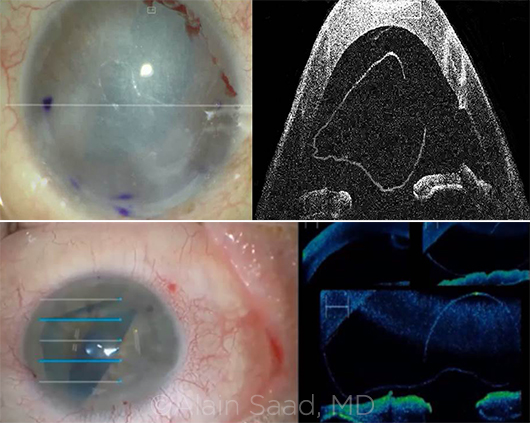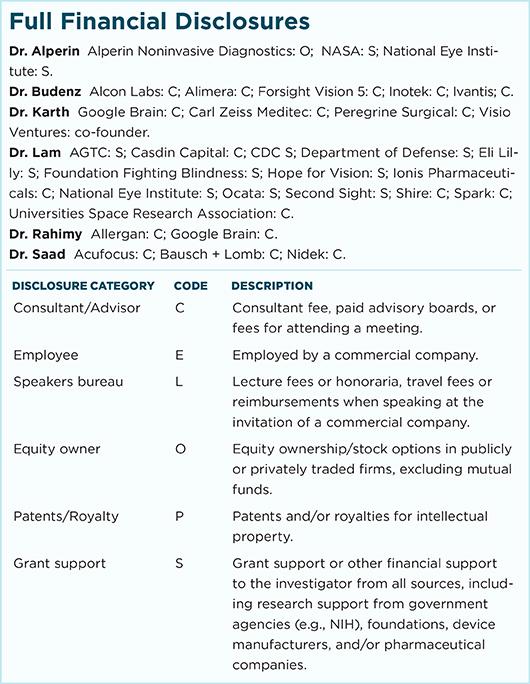Download PDF
Descemet membrane endothelial keratoplasty (DMEK) has a reputation for being difficult to master. But does the learning curve affect patient outcomes? To answer that question, French investigators evaluated the first 109 DMEK procedures performed by a single surgeon (98 eyes, 84 patients) between March 2012 and November 2014.1 They assessed the learning curve for graft preparation and graft unrolling as well as the impact of experience on visual acuity gain and percentage of endothelial cell loss.
 |
DMEK. Graft is visible in the anterior chamber on intraoperative OCT (top, Haag-Streit; bottom, Rescan) despite corneal edema.
|
Learning curves. In this model, the number of procedures needed for a surgeon to achieve 90% of the learning curve plateau was 68 cases for preparation time and 46 for unrolling time. It was estimated that 50 cases were required overall to achieve a good standard of care, as evidenced by the number of complications and reproducibility of preparation and unfolding time, said coauthor Alain Saad, MD, at the Fondation Ophtalmologique Adolphe de Rothschild in Paris.
Speed improves, but visual outcomes are similar. As expected, greater surgical experience resulted in faster graft preparation and unrolling time. Endothelial cell loss was significantly higher with inexperience. But—in the short term, at least—neither the cell loss nor the learning curve affected the patients’ best-corrected visual acuity gain at 1 week and 6 months.
“However, it’s possible that cell loss may influence the long-term survival of the graft,” Dr. Saad commented, “meaning that experienced surgeons may be able to achieve superior long-term results.”
Other factors. The researchers did not evaluate the influence of mentors, the ability to perform several surgeries in close succession, or the use of intraoperative optical coherence tomography. These factors might accelerate the learning curve and lower complications, said Dr. Saad, who also noted that DMEK techniques have improved and become more standardized since the beginning of this study. “This means that a DMEK surgeon starting out today might be able to master the techniques faster.”
For surgeons considering adding DMEK to their practice, Dr. Saad had some encouraging words: “DMEK is not as complicated as it may seem. You just need to precisely follow each step.”
—Annie Stuart
___________________________
1 Debellemanière G et al. Cornea. 2017;36(1):1-6.
___________________________
Relevant financial disclosures—Dr. Saad: None.
For full disclosures and disclosure key, see below.

More from this month’s News in Review